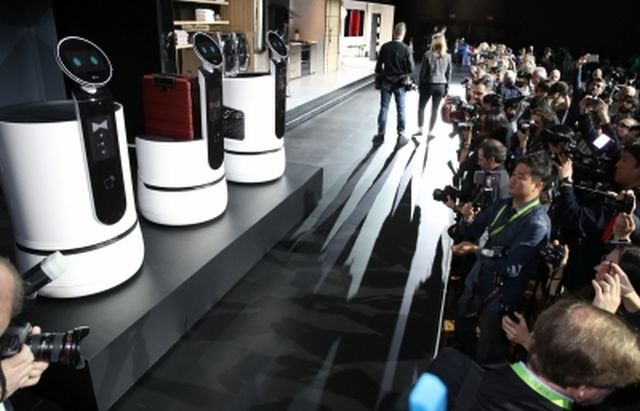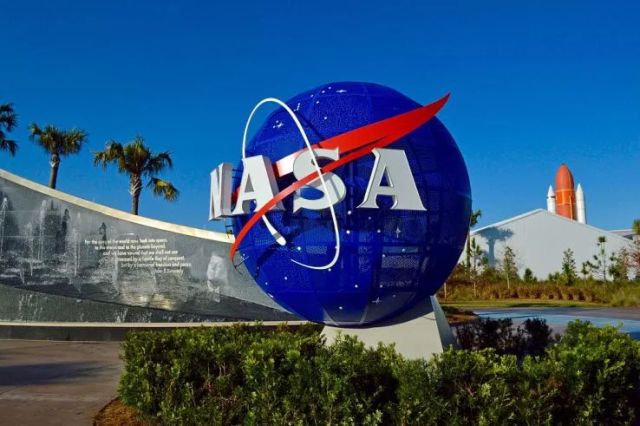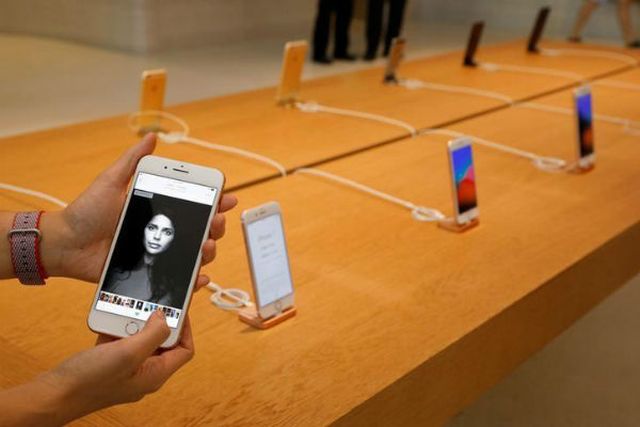
by Editor | May 25, 2021 | Business Summit, Events, Markets, Technology
 By Hardev Sanotra,
By Hardev Sanotra,
Las Vegas : The largest technology show on Earth took off in this hub of the gaming world on Monday with Artificial Intelligence (AI) taking centre-stage as the wonder kid of tomorrows world, promising to bring in sweeping changes in everyones concept of technology.
The Consumer Electronic Show (CES) 2018 at the Las Vegas Convention Center and other places would showcase products and solutions from almost all the tech giants, bringing in latest innovations and gadgets which would be available for buying or adopting in the coming months.
The Consumer Technology Association, which owns and produces the show going on annually for the last 50 years, estimates the number of visitors to touch 1,70,000, with 3,900 exhibiting companies from 150 countries offering more than just the latest developments in mobile technology, Virtual or Augmented Reality and AI during the tech week. Also present are over 7,000 media representatives.
Many in the tech world were already looking ahead after the mobile phones and wearable devices had stolen a march over personal computers, which triggered off the technology revolution bringing into the homes of the consumers all that is possible through innovation. An epitaph of sorts was being written for the PC.
But as developments in the personal computing spaces show here, the predictions of the demise of PC may have been premature. As David Rabin, Vice President, Commercial Marketing at Lenovo (PC&SD) says: “The PC market is not dead or dying. Those who say so are wrong. We see a strong growth in this segment and the numbers prove it.”
The smart office market, which extensively uses PCs, is in an expansion mode and is expected to hit $100 billion by 2020, he said, adding that the PC is adopting the changes that are rapidly sweeping the tech world across areas.
This year’s tech show comes under the shadow of news that Intel, AMD and ARM chips, that are at the heart of most computers, are vulnerable to security flaws. The news came just days before the show and sent a shock waves through the companies and millions of users.
Because chipmakers had remained unaffected by security issues even as news about major breaches have regularly erupted in some of the best-known companies. Stealing of private data of tens of millions of users has time and again roiled the tech world.
But on Monday, Intel CEO Brian Krzanich stepped on stage, aiming to allay fears of the breach through “Meltdown” and “Spectre”, the two vulnerabilities which have affected the chips used in the last two decades.
“Our primary goal has been to keep our customers safe. We have not received any information that these exploits have been used to obtain customers’ data,” Intel CEO told the audience during his keynote address here, urging everyone to patch their systems as soon as these are available.
Microsoft and others had discovered “Spectre” and “Meltdown”. All the big tech giants — Apple, Google, Microsoft, Amazon and others — have pushed out updates for their devices to fix the vulnerabilities.
This year’s tech show also comes with an array of star speakers and performers from the field of music, movies sports and technology.
“We’re bringing the stars to Vegas. Nearly all of these entertainers and other celebrities are involved in some of the most interesting technology efforts out there. So it’s exciting to have star power on hand,” said Karen Chupka, Senior Vice President, CES and corporate business strategy.
The celebrities include singer and actor Ray J, Rapper Iggy Azalea, rock musician Joe Perry, actor Neil Patrick Harris, guitarist Tommy Shaw, Olympic medallists Usain Bolt and Nastia Liukin, Rock Band Styx, dormer NBA star Shaquille O’Neal and Baron Davis and Star Gigi Gorgeous.
(Hardev Sanotra is at CES 2018 on the invitation of Lenovo. He can be reached at hardev.sanotra@ians.in)
—IANS

by Editor | May 25, 2021 | Corporate, Corporate Buzz, Corporate finance, Markets, Technology
 New Delhi : Cloud computing and using Artificial Intelligence (AI) to process vast amounts of disparate data were most picked up in 2017 that brought success for the Banking, Financial Services and Insurance (BFSI) sector in India, Microsoft said on Tuesday.
New Delhi : Cloud computing and using Artificial Intelligence (AI) to process vast amounts of disparate data were most picked up in 2017 that brought success for the Banking, Financial Services and Insurance (BFSI) sector in India, Microsoft said on Tuesday.
“The year 2017 witnessed a revolution in the BFSI sector as far as technology integration is concerned. A digital culture shift, designing a modern workplace that harnesses digital intelligence and enabling mobility are key aspects of it,” Microsoft said in a statement.
The rise of self-service technology for partners and consumers drastically reduced the servicing cost for enterprises and improved customer satisfaction.
On these lines, Microsoft launched Kaizala, a mobile app and service for Android, iOS and Windows phones, designed for large group communication and work management.
The app coordinates work with the entire value chain, including field employees, vendors, partners and customers on-the-go.
In 2017, Cloud offered enterprises its unique advantages on three levels — making banks agile by rapidly upgrading to Cloud-based technology, focusing on user adoption by identifying use cases based on work profiles and transforming business by process alignment with the new tools — all of which together ultimately enhanced, both branch and customer experience.
AI transformed both front and back office operations with its self-improving programmes.
Managing data has a lot to do with security and banking and finance institutions are sitting on a dearth of confidential information that requires technology intervention.
Stable and high performing ‘BankingEasy’ applications, enabled small to mid-size banks to offer services and digital experiences such as centralised clearing, multi-channel banking, relationship banking, real time dynamic reporting, among others.
Mobility and automation innovation in technology enabled banks in their turnaround time and to minimise errors. This will be a big boon for the banking and financial institutions in the coming year, Microsoft said.
—IANS

by Editor | May 25, 2021 | Markets, Technology
 Washington : The Artificial Intelligence (AI) and Machine Learning (ML) approach from Google researchers helped NASA discover two exoplanets, including an eighth planet around the star Kepler-90.
Washington : The Artificial Intelligence (AI) and Machine Learning (ML) approach from Google researchers helped NASA discover two exoplanets, including an eighth planet around the star Kepler-90.
With an eighth planet circling Kepler-90, our solar system now is tied for most number of planets around a single star, NASA and Google said in a statement late on Thursday.
Kepler-90 is a Sun-like star which is 2,545 light-years from Earth.
The Google AI found exoplanets using data from NASA’s Kepler Space Telescope.
In this case, computers learned to identify planets by finding in Kepler data instances where the telescope recorded signals from planets beyond our solar system, known as exoplanets.
The discovery came after researchers Christopher Shallue and Andrew Vanderburg trained a computer to learn how to identify exoplanets in the light readings recorded by Kepler — the minuscule change in brightness captured when a planet passed in front of, or transited, a star.
Inspired by the way neurons connect in the human brain, this artificial “neural network” sifted through Kepler data and found weak transit signals from a previously-missed eighth planet orbiting Kepler-90, in the constellation Draco.
While machine learning has previously been used in searches of the Kepler database, this research demonstrates that neural networks are a promising tool in finding some of the weakest signals of distant worlds.
Shallue, a senior software engineer with Google AI research team, came up with the idea to apply a neural network to Kepler data.
“In my spare time, I started googling for ‘finding exoplanets with large data sets’ and found out about the Kepler mission and the huge data set available,” said Shallue.
First, the researchers trained the neural network to identify transiting exoplanets using a set of 15,000 previously-vetted signals from the Kepler exoplanet catalogue.
In the test set, the neural network correctly identified true planets and false positives 96 per cent of the time.
Then, with the neural network having “learned” to detect the pattern of a transiting exoplanet, the researchers directed their model to search for weaker signals in 670 star systems that already had multiple known planets.
Their assumption was that multiple-planet systems would be the best places to look for more exoplanets.
“We got lots of false positives of planets, but also potentially more real planets,” said Vanderburg.
“It’s like sifting through rocks to find jewels. If you have a finer sieve then you will catch more rocks but you might catch more jewels, as well.”
Kepler-90i wasn’t the only jewel this neural network sifted out. In the Kepler-80 system, they also found a sixth planet.
This one, the Earth-sized Kepler-80g, and four of its neighbouring planets form what is called a resonant chain – where planets are locked by their mutual gravity in a rhythmic orbital dance.
The result is an extremely stable system, similar to the seven planets in the TRAPPIST-1 system.
—IANS

by Editor | May 25, 2021 | Markets, Technology
 San Francisco : Announcing its plan to broaden the AI for Earth programme, Microsoft has pledged $50 million over the next five years to put artificial intelligence technology in the hands of those who are working to mitigate climate change.
San Francisco : Announcing its plan to broaden the AI for Earth programme, Microsoft has pledged $50 million over the next five years to put artificial intelligence technology in the hands of those who are working to mitigate climate change.
Microsoft rolled out the AI for Earth programme six months ago with an aim to put the power of artificial intelligence towards tackling environmental challenges.
“At Microsoft, we believe artificial intelligence is a game changer. Our approach as a company is focused on democratising AI so its features and capabilities can be put to use by individuals and organisations around the world to improve real-world outcomes,” Microsoft President and Chief Legal Officer Brad Smith wrote in a blog post on Monday.
The announcement came on the eve of the second anniversary of the Paris Agreement.
AI can be very useful in monitoring, modelling and managingthe Earth’s natural systems.
Data can speak volumes about the health of our home planet, including the conditions of air, water, land and the well-being of our wildlife.
“But we need technology’s help to capture this vast amount of data and convert it into actionable intelligence. AI can be trained to classify raw data from sensors on the ground, in the sky or in space into categories that both humans and computers understand,” Smith said.
“Fundamentally, AI can accelerate our ability to observe environmental systems and how they are changing at a global scale, convert the data into useful information and apply that information to take concrete steps to better manage our natural resources,” he added.
Over the past six months, Microsoft has awarded over 35 grants in more than 10 countries for access to Microsoft Azure and AI technology.
Microsoft said its AI for Earth could be a force multiplier for groups and individuals who are creating sustainable solutions.
“That’s why we’re not just putting more resources into this effort, but also coupling this with a long-term commitment to applying AI to grow and scale in four key areas – climate, water, agriculture and biodiversity,” Smith said.
Microsoft wants to do it in three ways. First, it plans to expand seed grants around the world to create and test new AI applications.
“We will also provide universities, nongovernmental organisations and others with advanced training to put AI to its best use,” Smith said.
Next, Microsoft will identify the projects that show the most promise and make larger investments to help bring them to scale.
“Finally, as these projects advance, we’ll identify and pursue opportunities to incorporate new AI advances into platform-level services so that others can use them for their own sustainability initiatives,” Smith said.
—IANS

by Editor | May 25, 2021 | Branding, Corporate, Corporate Reports, Marketing Basics, Markets, Networking, Online Marketing, Sales, Social Media, Technology
 San Francisco : Essentially a hardware-focused firm, Apple is falling behind in the Artificial Intelligence (AI) race with Google and Amazon racing ahead while embracing the open-source and collaborative approach in the emerging field of AI, Fortune reported.
San Francisco : Essentially a hardware-focused firm, Apple is falling behind in the Artificial Intelligence (AI) race with Google and Amazon racing ahead while embracing the open-source and collaborative approach in the emerging field of AI, Fortune reported.
According to Mohanbir Sawhney, McCormick Foundation professor of technology at the Kellogg School of Management at Northwestern University, sheets of glass are simply no longer the most fertile ground for innovation.
“That means Apple urgently needs to shift its focus and investment to AI-driven technologies, as part of a broader effort to create the kind of ecosystem Amazon and Google are building quickly,” Sawhney wrote in Fortune.
According to him, Apple has reached its peak with “super premium” iPhone X and “does not represent the beginning of the next 10 years of the smartphone, as Apple claims”.
Apple launched the iPhone X globally on Friday.
Players pursue innovation along a vector of differentiation until the vector runs out of steam.
“When that happens, the focus of innovation shifts to a different vector and new market leaders emerge. We have seen this pattern several times in mobile phone innovation over the past three decades,” Sawhney said.
The vector of differentiation is now shifting from hardware to AI and AI-based software and agents.
“As AI-driven phones like Google’s Pixel 2 and virtual agents like Amazon Echo proliferateaToday’s smartphones will likely recede into the background,” he stressed.
Google Pixel phones offers great photo-enhancement features and deeper hardware-software integration driven by AI-based technology.
The second edition of Pixel features 5-inch display, 4GB RAM, 12MP rear and 8MP front camera, and 2,700mAH battery.
Google will bring Pixel 2 XL (6-inch display) into the Indian market from November 15 onwards.
The Amazon Echo enables natural conversations through the Alexa virtual agent.
“Apple has only to look at Motorola, Nokia, and Blackberry to understand how quickly a leader can fall from the peak in this market, and do its best to avert this outcome,” Sawhney added.
—IANS





